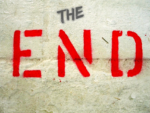PA Shorts: Wild Things
 Last week, I received a new insight on romanticism in a most unlikely place. I was on my way home from Eastern Arizona and a podcast from To The Best Of Our Knowledge entitled Writing Nature came up on my playlist. I sighed and thought “no, really?”, because I was truly afraid I was going to be listening to an hour that would make me feel guilty and depressed about the state of the environment and my own roles in it’s destruction (even though in my defense I was driving a Prius at the time) and I simply was not in the mood for it.
Last week, I received a new insight on romanticism in a most unlikely place. I was on my way home from Eastern Arizona and a podcast from To The Best Of Our Knowledge entitled Writing Nature came up on my playlist. I sighed and thought “no, really?”, because I was truly afraid I was going to be listening to an hour that would make me feel guilty and depressed about the state of the environment and my own roles in it’s destruction (even though in my defense I was driving a Prius at the time) and I simply was not in the mood for it.
Since I was driving said Prius 75 mph along I10 in the midst of 18 wheelers at the time, there was no way for me to skip ahead to another podcast. Putting my fingers in my ears and chanting la la la was also out. So I womaned up and listened and was delighted to find that not only were the guilt police absent but wildness, art, and creativity were at the fore.
In the opening segment David Gessner spoke about a personal interior wildness or emotional wildness that is in all of us. Examples of the animal inside us ranged from holding his father’s hand and feeling his pulse stop as he died, to the birth of his daughter, to his wife licking a milk mustache off his little girl’s face.
Later in the show, the poet Gary Snyder talked about entering into the wild areas of the mind (about 47:00). ” The less visited places are the ones that challenge you” He also quoted Levi Strauss who said, “Art is like a little national park of wild mind.”
When we work on romantic pieces that concern gnomes, trolls, Mephistopheles, brooks, forests, etc. and find them too cute and cuddly (a la Disney) perhaps considering them as metaphors for the playfulness, wickedness, animal instincts, beauty, and creativity present in all of us will cut any overt sweetness right down to size.


